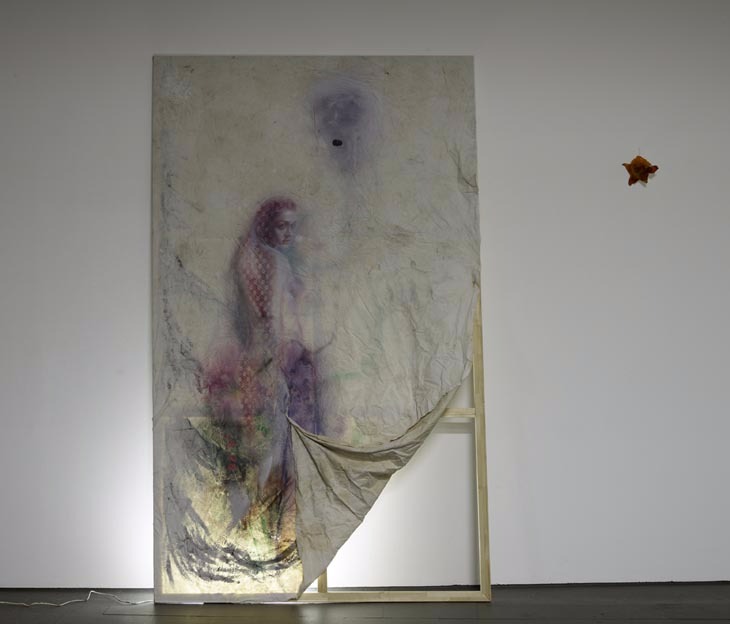

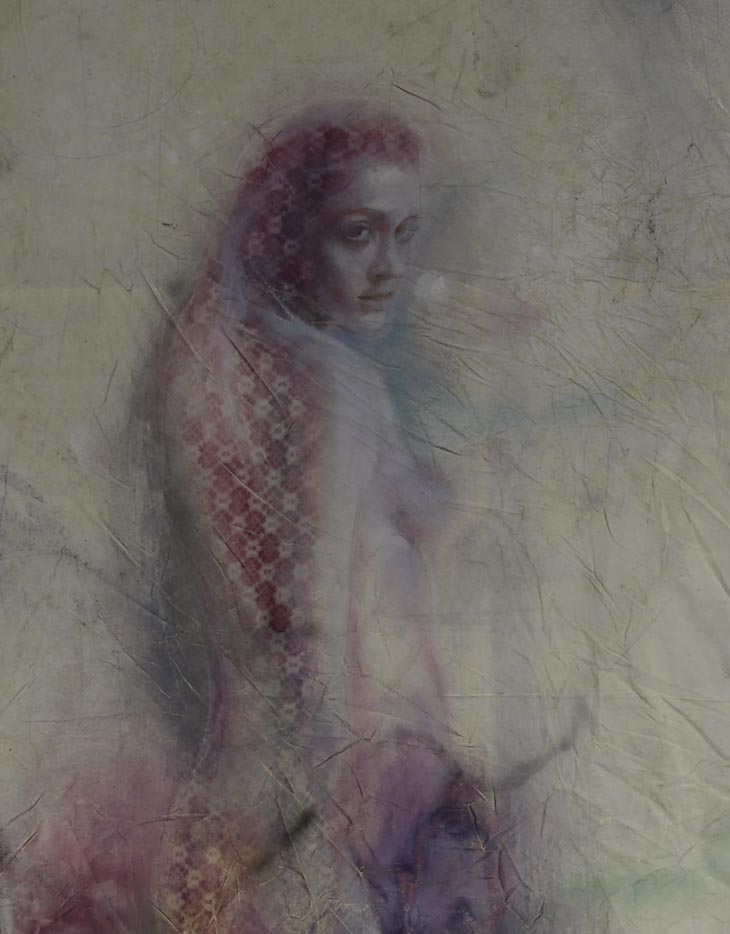
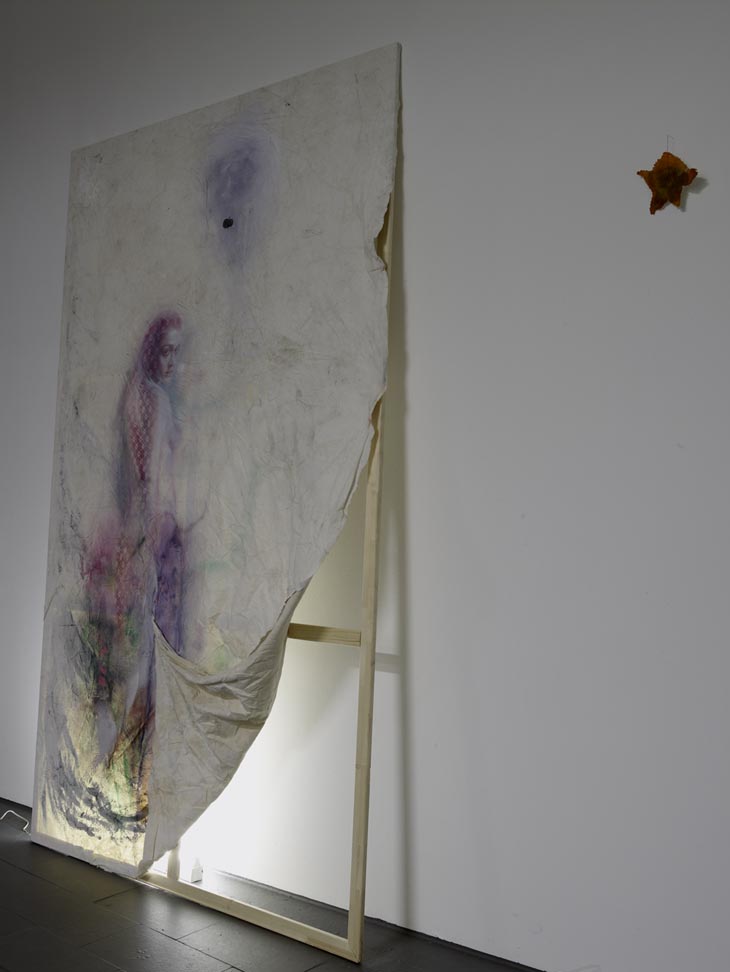
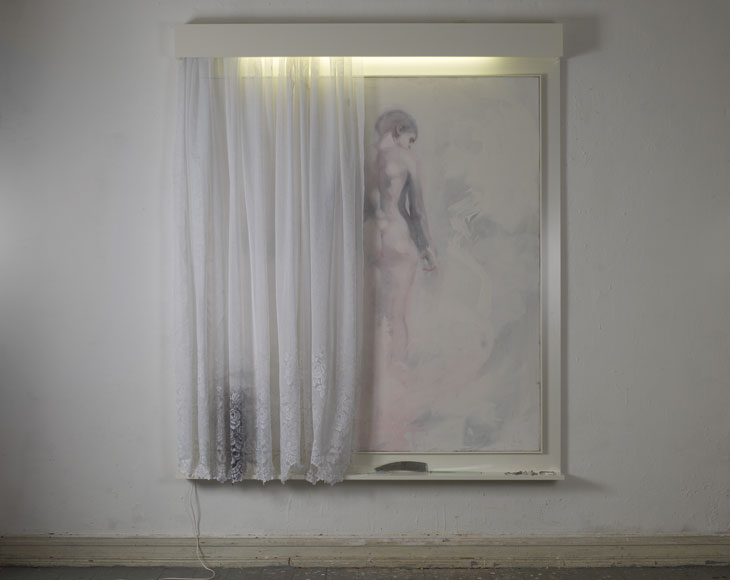
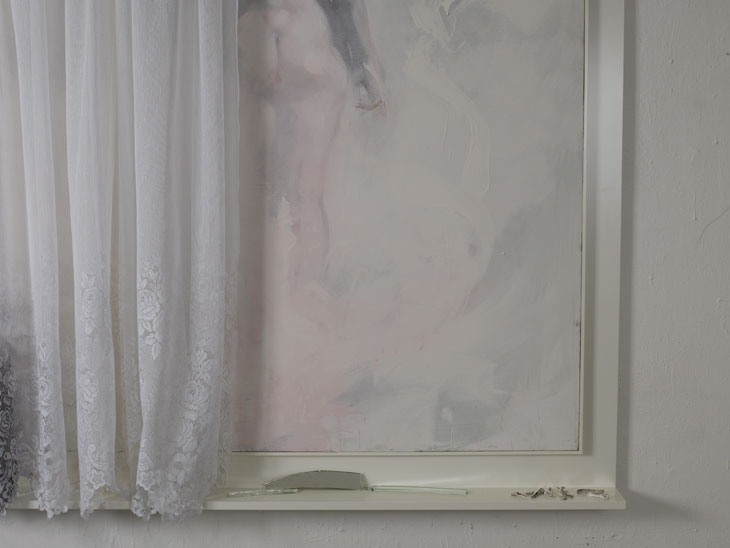
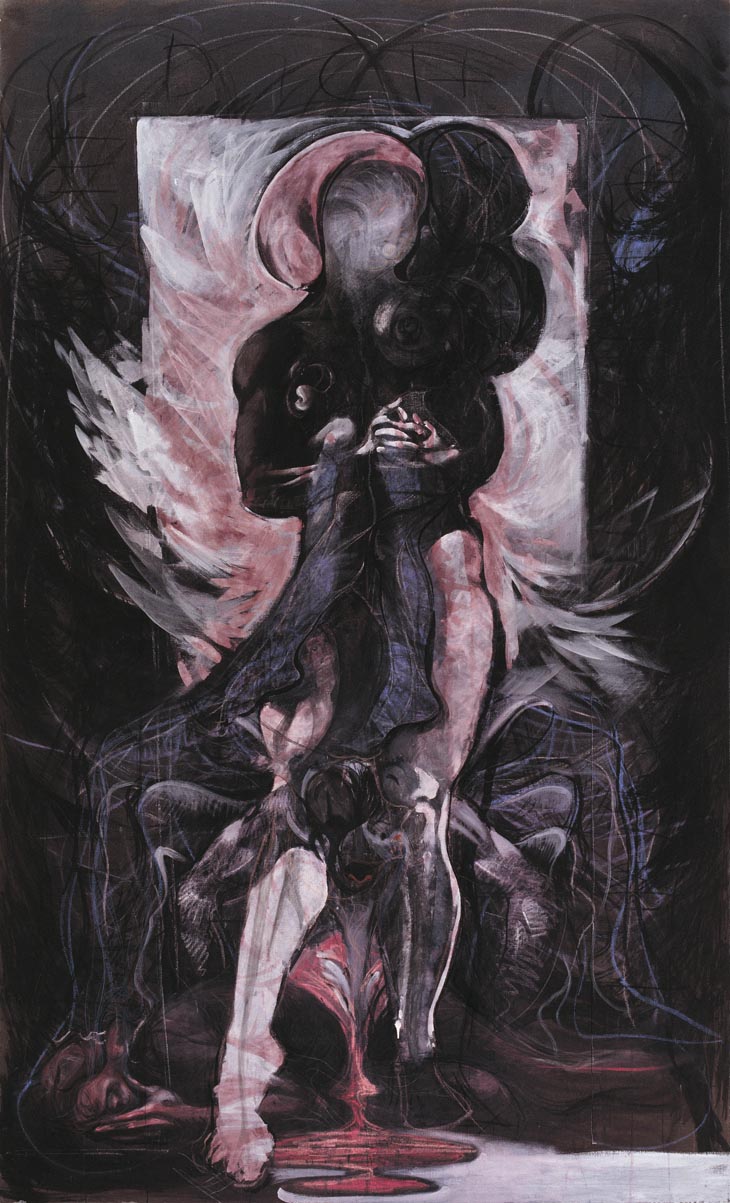
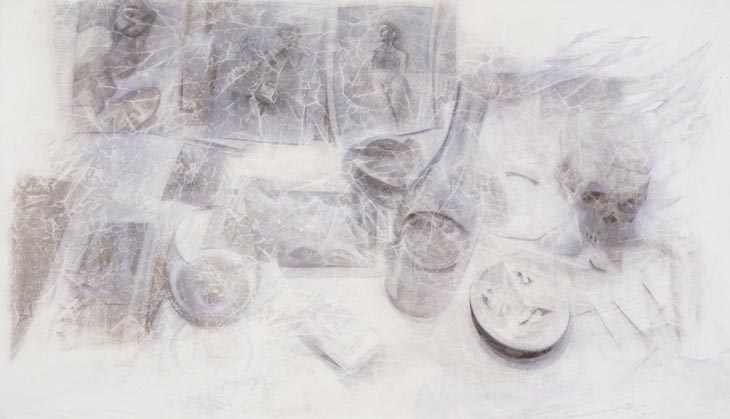
ARTIST:
Dirk Bell
Dirk Bell’s intimate figurative drawings and paintings unveil a new way of depicting and perceiving sensuality, like an evanescent but still present memory. In works such as the delicate Rabbit’s Moon (2007), with its illusion of a watery craquelure all over its surface, and the darker, more violently rendered Wolf Hamlet Madonna Elmex (2006), the artist revisits traditional genres and compositions – the memento mori still life, the symbolic representation of the human figure – filtering and compressing art historical references with a contemporary sense of dismantlement and disintegration.
The pictures within the frame of Rabbit’s Moon, depicting posing figures, illustrations in books, and other less easily identifiable shapes, are on the same illusory plane as the skull, glass of wine, bottle and ashtray next to which they stand, and contain the same visually hallucinogenic power.
In the limb-plagued Wolf Hamlet Madonna Elmex, two figures, one holding the other, are set against a background full of multiple marks suggesting motion. The exact meaning of the work is as impenetrable as similarly gestural prehistoric cave paintings. Nowhere is Bell’s embracing call for a new kind of ungraspable but overpowering figurative sensuality proposed more clearly than in Abgrund (Abyss) (2008). A naked figure, painted in soft brushwork and installed under a neon light, is partly revealed by a half-drawn lace curtain. A ledge running along the bottom of the frame holds broken mirror shards and charred pieces of bone. A certain frustration hovers over the work. Abyss, Bell explains, ‘marks a point of no return… The mirror shards can be used to look into fragments of the future, whereas the past as well as memory are spread out before one’s eyes and can be looked at… The cindered bones are relics of a picnic at the roadside…The whole scenery can be veiled by the curtain.’
In the limb-plagued Wolf Hamlet Madonna Elmex, two figures, one holding the other, are set against a background full of multiple marks suggesting motion. The exact meaning of the work is as impenetrable as similarly gestural prehistoric cave paintings. Nowhere is Bell’s embracing call for a new kind of ungraspable but overpowering figurative sensuality proposed more clearly than in Abgrund (Abyss) (2008). A naked figure, painted in soft brushwork and installed under a neon light, is partly revealed by a half-drawn lace curtain. A ledge running along the bottom of the frame holds broken mirror shards and charred pieces of bone. A certain frustration hovers over the work. Abyss, Bell explains, ‘marks a point of no return… The mirror shards can be used to look into fragments of the future, whereas the past as well as memory are spread out before one’s eyes and can be looked at… The cindered bones are relics of a picnic at the roadside…The whole scenery can be veiled by the curtain.’







